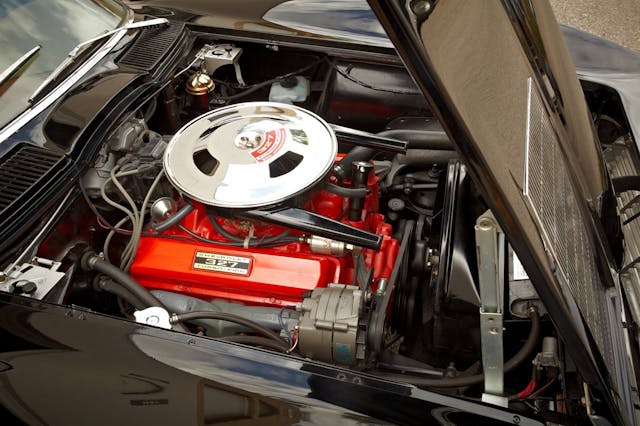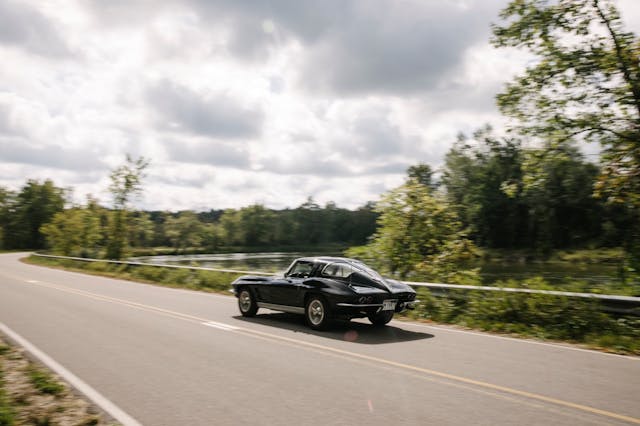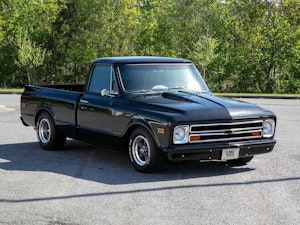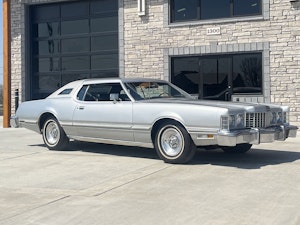Media | Articles
Is a low-mile, numbers-matching classic actually what you want?

“I’m searching for a low-miles collector car, and it has to have an original, numbers-matching motor.” So says nearly everyone when looking for their next classic car. But why?
Part of it is undoubtedly groupthink. We have aged into this hobby believing that these are the best cars. But is that true?
In the case of low miles, it ain’t necessarily so. A 20-year-old car showing 2500 original miles, be it a Ferrari, Porsche, or Honda, is a collector’s dream come true, right? Well, possibly—it depends how long the car has sat without attention. If it’s been a while, “waking up” that car might be a complicated (read: expensive) undertaking. The tires have aged out. The fuel tank might be filled with a smelly gelatinous version of gasoline. And any internal-combustion engine, sitting without the benefit of lubrication, will likely need serious attention.
Maybe those 2500 miles were collected at a rate of about 100 per year. Are the belts and hoses the original, aged-cracked rubber ones? Was the exhaust system ever warmed up enough to heat and vaporize the moisture trapped inside, or is the system now full of rust?
Let’s look at it from another angle. Is it worth it to you to pay a 30, 40, or 50 percent premium to get a 2500-mile car over a 25,000-mile example? This is a question only you can answer, but it’s something worth thinking hard about, especially if your plan is to drive the car instead of placing it in bubble wrap for most of your life. In doing the math for most cars, putting an additional 25,000 miles on a car that already has 25,000 miles on it will cost much less in depreciation than starting with a 2500-miler and adding your own 25,000 miles.
Marketplace
Buy and sell classics with confidence

On the note of “numbers matching,” almost no one knows what that term actually means. That’s because it is interpreted many different ways by many different people. In the very broadest of broad strokes, one could reasonably interpret “numbers-matching” as a car with all the original parts that contained serial-style numbers, which were placed on the vehicle when manufactured. Now, does that mean if one tire was replaced after a blowout, the car is no longer numbers-matching? Tires have numbers, right? You might think I’m exaggerating, but we’ve all seen an ad that details “originality” to an extreme.
Newsflash: Before “matching numbers” was a thing, when your engine blew up under warranty, you actually wanted a new one, not some rebuild done by the guys in the shop. But somewhere along the line people started believing their cars were as pure as the driven snow—that surely Zora, Enzo, Henry, or Butzi had built the thing themselves.
I had a client 20 years ago ask for advice on buying a C2 Corvette. Among his must-haves was matching numbers, which he interpreted as the serial number of the engine matching that of the chassis. His intent was to have fun with the car, to drive it, to wrench on it, and to bond over it with his preteen son (who loved Corvettes). Eventually, he said, he wanted to give his son the car, possibly as a college graduation present.
He was stretching his budget to find the right example, so I pointed he could get a car with a replacement engine (in Corvette-speak known as a NOM, for non-original motor) for perhaps $15,000 less. Intrigued, he did the math. He wasn’t buying the car as an investment; he was buying for fun. He didn’t care about ever showing it or having it judged. So he bought a great car that was everything he and his son wanted. The NOM was a later crate motor that proved to be a reliable powerplant from day one. Today, his son enjoys the car every bit as much, perhaps even more, than if it had come with the original motor.

If you’re shopping for a car to drive and enjoy—which I suppose most of us actually do—buying against the grain can save money in the long run. If you can afford the best, with low miles and matching numbers, feel free. I’m just saying that often there is no reason to eliminate a “lesser” car with higher miles or a replacement engine. The old-timers will tell you that someone else worked out the bugs for you.
I’m not here to tell you how to spend your money. But I am here to give you complete permission to buy what YOU want, not what your friends want. Besides, unless you’re selling, no one has to know.
***
Want a better understanding of what’s driving collector car values? Sign up for the Hagerty Insider newsletter.













Who cares? Automobiles are made to be driven, some more enthusiastically than others. Components are removed and rebuilt, but sometimes replaced. This includes engines.
Those wanting to park mad money are better served by real estate, bonds, the S&P 500.
With NOM you feel no guilt when you put in a 5 speed or change to other modern parts. Consider that the
car was made for a mass market and you can make it for you.
Stephen, please pardon if my opening seems to question your closing remark, which i agree wholeheartedly with. But my first reaction on reading the above filler, aka “content,” padding, article, was “Who cares? So those were the first words i typed.
Amen squared and cubed, Herr Wohleber.
Agree 100%! I recently bought A ’70 442 convertible, a car I have been searching for for years. #s matching? Don’t care. Low miles? Don’t care. Main reason is to drive the damn thing! All the dirty work was done. Rebuilt engine and th400. Convertible top moves smoothly. Missing factory ac. OK with me. However, some clown installed red inner fenders, added W30 badges, thinking $. Didn’t fool me. Doing some work on it I found they changed the color from the beautiful aqua blue to matador, or rather resale red. That said, I’m having a blast detailing and driving it, having given up my motorcycle for 4 wheels. Age will do that to you! Enjoy them.
Just recently purchased a 72 Corvette. Nothing was ever mentioned about it being Numbers Matching or even having only 40k miles. The vehicle was just described as an older restoration with a “Built 350” which has a mild cam, chrome pistons etc. Ran good but I did some work and discovered it was matching. Doesn’t matter at all to me and I still drive it as much as I can – that’s what I bought it for!! Heck the only thing matching on that engine is the block anyway. Does that still count – running 200 hp more than the original? Heck it will probably still bring more money if I ever decide to sell it before I blow the darn thing up!
I would say on the matching numbers it depends on whether the replacement engine is the same vintage and type as the original. Let’s say you have a C2 Corvette with the High performance 327. If that engine is replaced with an identical spec High performance 327 from a similar vintage donor car then that car is surely worth more one with a generic crate 350.
In answer to the title question: generally speaking, yes.
“Matching numbers” is sort of a short cut in the ad meaning “all original condition.” It only really counts in that context anyway. I once bought a ’69 Corvette convertible that had been converted to an ’81 body. The seller touted the “matching numbers” motor and the answer was “who cares?” With a custom body conversion, there was no value whatsoever to that car having the matching number motor. I drove the car as my every day driver, eventually the motor blew a head gasket, and was replaced with a different 350. When I sold it, there was no difference in the price I got for it even without the “numbers matching” motor.
If you are paying a premium for a low mileage, numbers matching car, then remember that every mile you drive it takes away from those two terms that you have paid extra for. I drive my cars, so I don’t pay the premium. My ’57 Bel Air has a 350 4-bolt main from a ’70 Chevy truck, which came out of a ’78 Camaro that I bought for parts. And that motor replace the ’59 Chevy 283 that was in my Bel Air when I bought it, a sign that the original 283 had been replaced long ago. With a run of the mill ’57 Bel Air, it really makes no difference if the original 283 is in it or not (except for original fuelie or dual quad options). The reality is that you need to consider what car you are buying and what you are going to do with the car. If you are buying a ’74 Delta 88 convertible, nobody will ever care if it has the original motor in it. If you are buying a ’55 T-Bird and you are going to drive it any substantial amount of miles, you will be happier with an update to a 302 and a 12 volt system rather than dealing with the 292 and the last year of 6 volts. If you are paying the money for an original ’63 fuelie split window Vette, it would be pretty stupid to pay the extra for the original matching number car and then turn it into a modern motor resto-mod.